The Powerful Story of an Incarcerated Trans Artist: A Q&A With ‘Love, Jamie’ Film Star and Producer
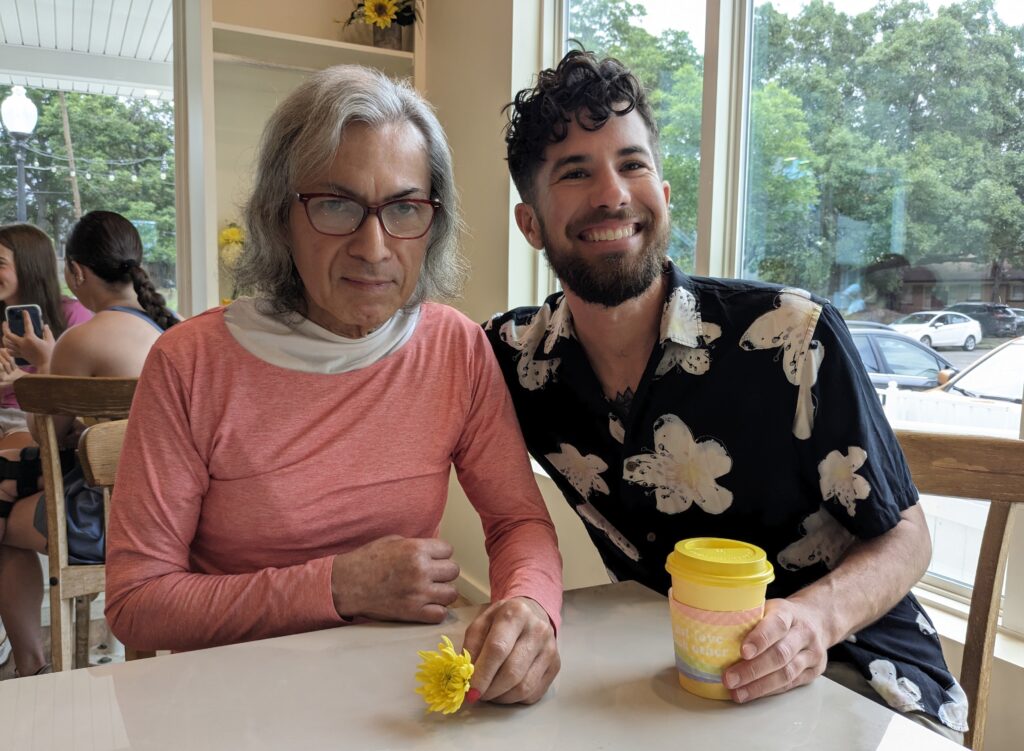
Jamie Diaz and Gabriel Joffe after Jamie’s release, courtesy of Greene Fort Productions
In the new film “Love, Jamie,” we meet Jamie Diaz, a trans woman and artist who has been incarcerated for nearly three decades in men’s prisons, and the younger trans person on the outside who she’s sent letters and art to for a decade. TransLash caught up with one of the film’s stars and producer to talk about trans perseverance, trans artistry, and the beauty of chosen family.
By Oliver Whitney for TransLash Media
Jamie Diaz is an artist who just wants to be seen for her work. The 66-year-old Mexican-American trans woman has been drawing and painting since she was 15. She uses vivid colors, surrealism, and self-portraits to tell complex stories about queerness, love, and human suffering throughout her work. And much of that work has been created behind prison walls, with paint brushes constructed from donated human hair.
Diaz spent the last 29 years incarcerated in men’s prisons. In the new short film “Love, Jamie” from director Karla Murthy, we get to know Diaz, her artwork, and her story through letters and phone calls shared with Gabriel Joffe, a trans person on the outside who has become her closest companion over the past 10 years. Joffe first started corresponding with Diaz in 2013 when they received a letter from her while working with Black & Pink, the prison abolitionist organization dedicated to LGBTQ+ people and folks living with HIV/AIDS who are impacted by the prison industrial complex. Murthy’s poignant film — which is now streaming on PBS — traces Joffe and Diaz’s decade-plus friendship through letters and shared art, aiming to tell a story not about an incarcerated trans woman, but one about a trans artist.
“You know what I want people to feel when they see my art?” Diaz says over the phone to Joffe in the film. “I want them to know that we’re good people.” That “we” can be read as many things — trans people, incarcerated individuals, and especially trans women of color affected by the U.S. prison system.
TransLash caught up with Joffe and “Love, Jamie” producer and director of photography Andrew Fredericks over a Zoom call to talk about the new short documentary film. The two reflected on the significance of chosen family and trans elders, what they learned about the experiences of trans women impacted by the carceral system, and shared an update on Diaz, who is now finally free after being granted parole at the end of May.
TransLash: So good to meet you both. I just watched the film this week and admittedly cried the whole way through. It was just so powerful and so meaningful. To me as a trans person, to watch this felt really, really amazing and important. So thank you both for your work.
Andrew Fredericks: Thank you.
TransLash: Andrew, I’d love to start with you and ask, as the producer and the DP, what was it really that drew you to telling this story?
Andrew Fredericks: Well, the first thing that drew me to it was when I saw Jamie’s art. Dan Cooney pulled out a drawer. I was at his gallery filming for a different project, and then I said, well, what shows do you have coming up? Because Dan always has great shows, people, unknown artists, but really great ones. And he opened up this drawer and started pulling out these paintings and drawings. And I was like, wow! And then he started telling me Jamie’s story, that she was incarcerated in Texas and what Jamie, what Dan knew about her. So that was initially what drew me.
I said, this is a great story. This really needs to be told. And at the time, I was very busy with a couple other projects and I thought, I don’t really have time, but I really want to get this story told. And that’s when I reached out to my longtime friend and colleague, Karla Murthy, who’s the director and editor of the film. So I kind of passed just the basics onto Karla. And then she started digging into it, and she was drawn to it too.
And if I can speak for her, because I heard her talk about this is, then what really cemented it, the story was good. Her art was good. It had an interesting angle of an incarcerated trans woman. But Dan Cooney shared a letter that Jamie wrote to him. And that letter was just so honest and so revealing and so full of compassion and love and understanding and honesty. And then that’s when Karla called me and she said, this, I know what to do now. And so then, then I said, well, I’m all in. If you’re all in, I’m all in. And then we contacted Gabriel and were properly vetted by Gabriel. And then with the blessing of Gabriel and Jamie talked about it, and I guess trusted us, Karla and I, enough to tell their story. And it really is to me, it’s not just the story of a trans woman incarcerated, an artist. It is about art. But to me what’s under it —it’s a story of love and friendship and what can happen if you just give yourself to someone else, wholly. So I would say that’s what drew me to do it.
TransLash: And that relationship Gabriel, I mean, to have a decade of sharing letters with someone is so profound. Can you tell me a bit about what that was like, especially for you as a trans person on the outside to be communicating with a trans person on the inside?
Gabriel Joffe: I think it was really a beautiful experience for me to just have an older trans person in my life. You know, it’s not every day you meet trans elders. It was nice to have someone who had such wisdom about life and lessons to impart on me. You know, she’s really serves as that figure in my life of a trans person [who] has gone before. And obviously our life experiences are so different, but just being able to talk about things and just hear her perspective. I think that’s something that is rare. Just even the larger LGBT community, to have elders.
And it’s kind of wild because until last week I just had all of Jamie’s letters, this 10 years of letters and correspondence. But she walked out of prison with all my letters, and we kind of, that first night, sat down and she showed me scrapbooks she had made with pictures I had sent her. And she had in the first page, the very first letter she had received from me. It was also this wild chronicle of like the past 10 years of my life. I have shoe boxes of her letters, she had these, and she wanted me to bring them back to Denver with me for safekeeping. So now I have kind of the second half of the collection. It’s wild to see 10 years of letters I wrote. So it just feels nice to kind of now be in like a new chapter of our relationship.
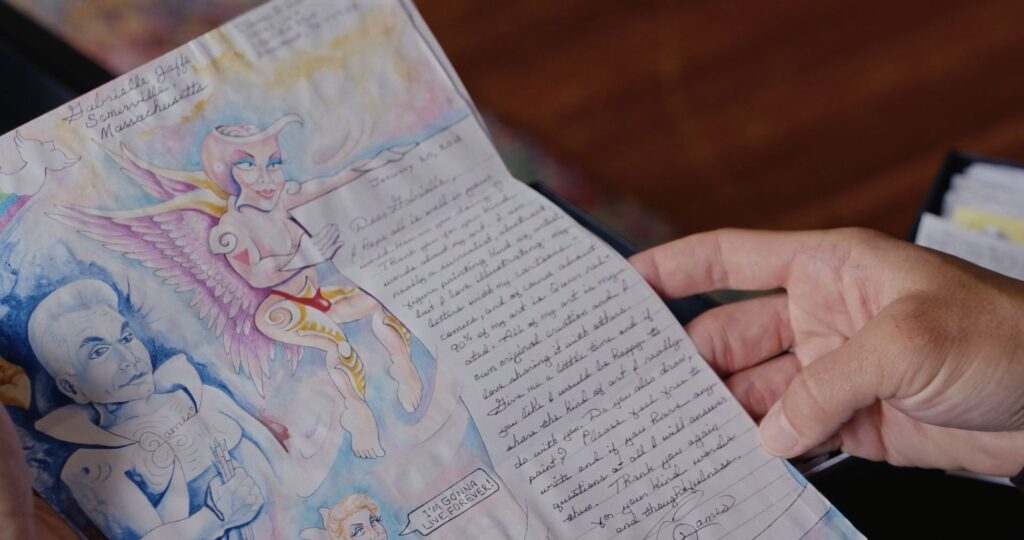
TransLash: That’s wonderful to have it so completed, your letters and her letters together.
Andrew Fredericks: You have to collatehem now, so it’s back and forth.
Gabriel Joffe: Oh my gosh. That’s a project for another day.
TransLash: Gabriel, you received so much art from her over the years. Were there any particular pieces of Jamie’s work that really stood out to you and spoke to you the most over that decade?
Gabriel Joffe: I mean, really immediately, I think of Worlds Within Worlds. That was the first large scale piece. You know, I had received the illustrated letters, but that was in 2013. And I have a picture of myself holding it up. And that was one that I don’t think I’ll ever part with. It was the first piece she sent me. And just the colors, that’s when I really realized how Jamie’s use of color and how incredible it is and depth.
And it is her more abstract piece. But I felt like there was so much captured. It’s one of the deepest pieces I feel, to me, of her work. And so, yeah, Worlds Within Worlds. I think I’ll always remember receiving that and just being blown away and I think fully understanding her capabilities as an artist.
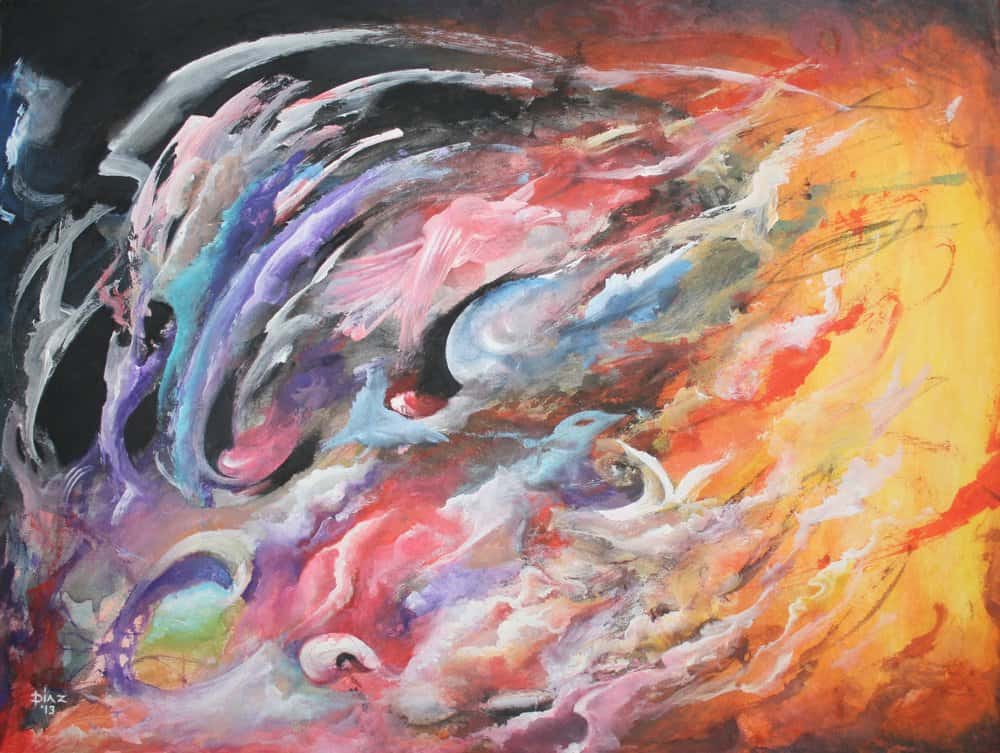
TransLash: Andrew, I’m curious, as the DP and producer, it must have been an incredible challenge to make this film where you can’t access one of your leads, right? You can’t actually get footage of her. Can you talk a bit about what that process was like and how it challenged you visually? Was that a hindrance or did that sort of give you more artistic license to get creative?
Andrew Fredericks: Well, I think at first, because you think about the obvious ways to make something first and you think, well, we have to try and interview Jamie. And we started going down that road a little bit. We started making contact with TDCJ [Texas Department of Criminal Justice]. But then at a certain point — and we were working on that, we’re gonna do it — but Karla started editing some, and we really realized that the film wasn’t about incarceration. Jamie was an incarcerated person. But we didn’t want the film to be about incarceration. And if you saw Jamie incarcerated in prison, that would be the image one would have of Jamie. And we didn’t want that. Because that’s what Jamie wanted, to be seen for who she was, not where she lived. And that meant getting to know Jamie through her words and through her art.
So then we consciously decided we’re not going to try and show Jamie incarcerated. And that would’ve been the only way to show her, would [be] to get an interview in some kind of visitation room or through the glass. So it was kind of fortuitous that it was a little bit of trouble because it made us realize too.
So as far as the challenges, we still needed visuals and Jamie’s art provided a lot of the storytelling. But there was also, we wanted to show the isolation of being incarcerated. So we needed some visuals. And luckily, I spent a year in Texas working on a film, another film at the same time. And I came across this abandoned Texas prison facility. And so I just started, whenever I had a chance, I would go down there and just make images. I imagined myself being inside of there and looking out at the world outside. So I tried to create imagery from that prison facility that showed what Jamie might see, you know, I could only imagine it. And sometimes there’s flowers just beyond the fence. So I tried to show something that’s right there, but just out of reach, just on the other side of the fence.
And then Karla and I talked a lot about the visuals. There’s a section [of the film] where Jamie talks about being young and feeling almost trapped by her queerness and being afraid to come out at first. And so when we’re in Houston, we tried to shoot things from behind fences and behind, so it wasn’t direct. So there was this idea. And then once it got to New York and there was the show, everything was out in the open. There was no more behind anything. There was a shot even of Gabriel talking about some of their early trouble and [I] shot from behind this fence where we saw Gabriel. So we tried to make the visuals kind of [gestures with hands pushing inwardly] and then open up at the end. And then with the birds in the sky at the very end [of the film] representing total freedom. What’s freer than a bird. So just to wrap back around, yes. Not showing Jamie, at first we thought it was gonna be a problem, but it ended up really being liberating.
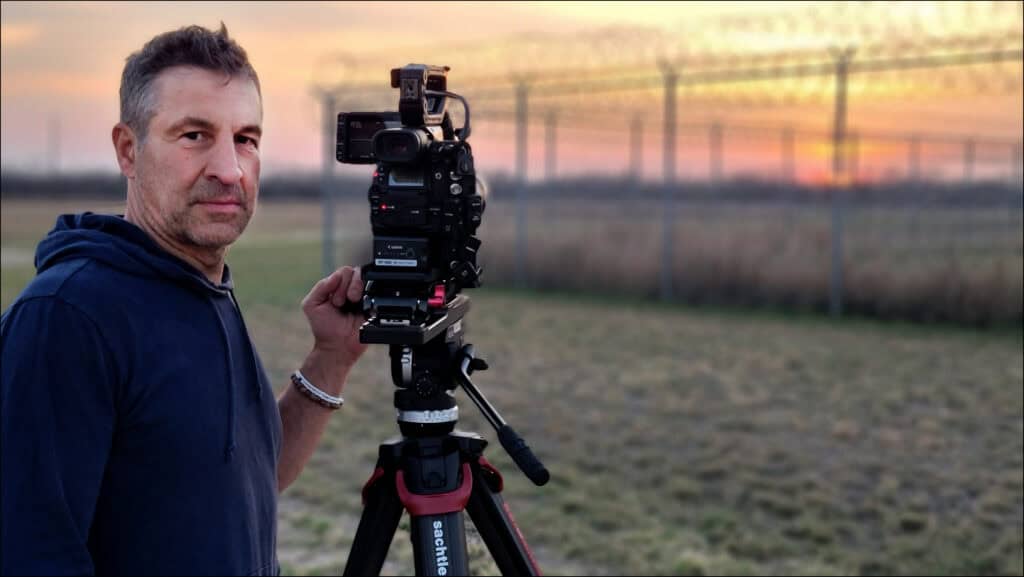
TransLash: Yeah, that shot at the end of the birds flying is so beautiful. And for you both, I’m curious — I know Gabriel you worked with Black and Pink and probably had some sort of insight into what the experiences are like for incarcerated trans folks. But I’m curious if through making this film, and Gabriel through your communications and relationship with Jamie, were there things that you learned about the particular experiences of particularly trans women in men’s prisons that you hadn’t known? What did this experience open your eyes to that you didn’t know of before?
Gabriel Joffe: Yeah. As someone who has never been impacted by that system personally, I think my motivation to join as an organizer with Black and Pink back in 2012 was conversations I would be having with other queer activists or books. It was mostly through books I was reading, primarily “Queer (In)Justice [The Criminalization of LGBT People in the United States]” was a really important text for me.
So it was books, but then what really I think the biggest learning was as I joined Black and Pink and volunteered during their weekly mail processing and read hundreds of letters from all sorts of LGBTQ folks that are incarcerated across the country — those individuals and their experiences, I just started to learn so much more. And then when I connected with Jamie — and I didn’t know it’d be a 10 plus year, I didn’t know what it’d become. Because I feel like you never know what a relationship will turn into. But through her specifically of just what she would share, from mundane things — like she would describe in extreme detail what her cell looked like, and she’d say, I have a toilet over here and then I have the floor here and I lay out my paintbrush. She would just in such detail, especially if she moved, got transferred, she would say exactly what her cell looked like, what she was eating to things like commissary.
Even in staying in touch with her, that changed from letters to then the electronic messaging system and you have to kind of buy digital stamps. So I got to learn the kind of ins and outs of the apparatus surrounding the prison, different companies you have to interact with, whether you want to write or visit. And even now in the film you see just a decade of letters and, about six months before Jamie was released, Texas moved to a digital mail system.
So there’s no letters going in anymore. The technology has changed. So Jamie would no longer, if she was still inside and up until her release, she was no longer able to receive physical mail from me. So I learned a lot about that, just the whole apparatus as well as Jamie’s personal experiences.
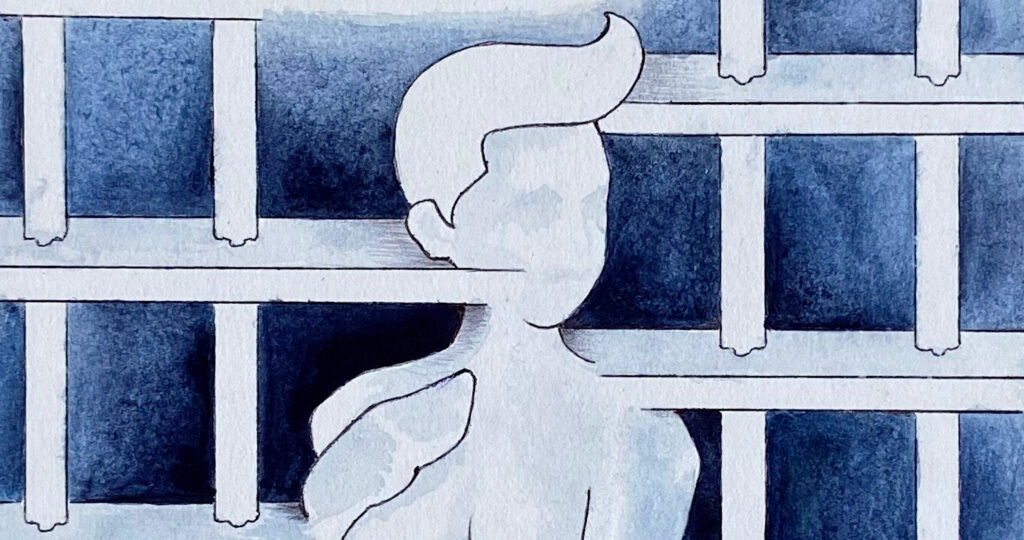
TransLash: Andrew, how about you? Is there anything that opened your eyes that you hadn’t known before in the process of making this?
Andrew Fredericks: Oh, so much. I mean, I grew up around, I guess you could call it criminal justice. My mother used to run, when I was a kid, ran halfway houses for men at that time, only, getting out of prison and transitioning in. So I had a basis from my mom about the troubles of reentry and also about treating everyone, even if they’re incarcerated, they’re human beings and they have their own problems. So I had a little bit of background, but as far as, like Gabriel says, the actual apparatus of prison, of being incarcerated, is just byzantine. And then there’s people always, companies looking to profit off of it, whether they’re the people you have to buy the stamps from or if you want to make a phone call.
But through Jamie, because once we made Jamie’s acquaintance, I started exchanging mail also with Jamie and doing calls. And I just got an inside view of what it was like to be incarcerated. And it really opened my eyes to what that experience was like from someone who was telling me about it. And it made me appreciate, number one, my own privilege and my own freedom. And how much just the tiniest things one takes for granted if you’re not incarcerated.
I’ll never forget the day when — and this happened to both Karla and I, we had a similar experience. — I was on the phone with Jamie and I was on my front porch and I live in the country. And I was complaining about how much it was raining. “Oh, Jamie, it’s been raining.” But Jamie said, “when I get outta here, the first thing I want to do is go out and stand in the rain.” And it just made me realize just the simplest thing like that, that she couldn’t do. And so that, and as a filmmaker, I hope to always create empathy for other people. I’d rather create empathy, then knowledge. And so if that made me open my empathy up, I’m hoping that the film does the same for all incarcerated people.
But then Jamie shared the added being trans, you know, and the troubles that that brought to her sometimes within the system. It’s a dehumanizing place and it’s a macho place. So Jamie had to overcome even that. And it also brought me into a world of people who I didn’t know, a world of trans people. And it’s such a beautiful community. It’s such a beautiful, welcoming community and it’s so under attack. And so that’s the other thing we wanted to do, is be an ally. You know, I’ll never fully understand the inner, what it means to be trans. But I understand human feelings, and so we hope that the film opens up people’s empathy for people who are incarcerated, but also Jamie’s hope, to understand “we’re good, loving people.” So that’s what I learned.
TransLash: Gabriel, what do you hope audiences take away from this story and from your relationship with Jamie?
Gabriel Joffe: You know, I think that’s changed over the past year of the film being out. But I think presently just, first of all, the incredible art that Jamie creates. She’s an artist. She wants to be known for her art. So just more people seeing her art, and I think there’s so much creativity and talent of folks that are incarcerated that we just miss out on in society. And so I think Jamie’s art stands on its own. She’s an incredible artist. And I think there’s other people whose talent we’re not able to see. So I’m just glad that the film gives Jamie’s art a platform. I think also just especially, I hope this film is an uplifting to the queer community, that they see that there are elder trans folks in the community and there’s love and connection and that chosen family is beautiful.
TransLash: Mmm. Definitely. I think we have time for one more question. Gabriel, I know that you had met Jamie when she was released last week. I read about it in a story from them. Can you talk a bit about what that experience was like to be there to receive her?
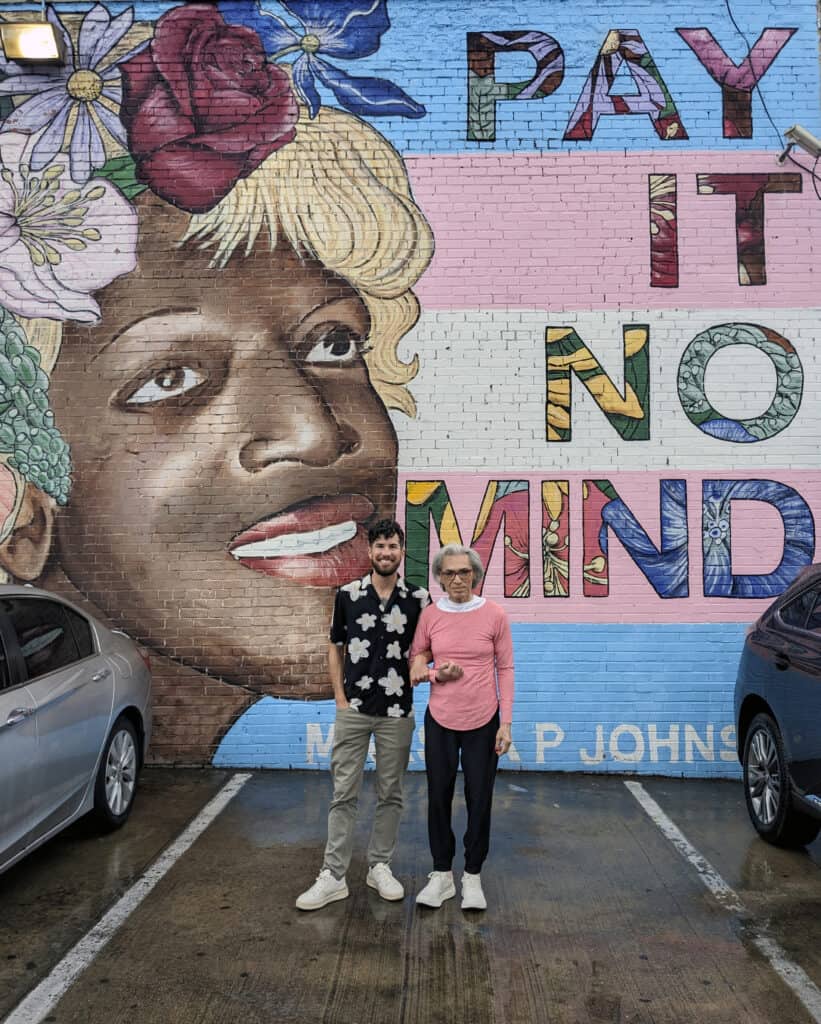
Gabriel Joffe: You know, my dear friend Spinney was there, who’s been part of this
journey from the beginning, lived with me when I received those first letters from Jamie. And so it was great to have them there. Because we were there waiting for about an hour and a half and I was kind of going through many stages of emotion. You know, at one point I was trying not to cry. And then another point I was like, thinking of all the things I forgot to bring. And then was just kind of cycling through all the emotions. And it was down pouring, thunder. But I think even up until even we left the entire compound, the apparatus of the prison was very present. We had to stay in the parking lot. There was even at one point when I saw her, I just started walking forward and they yelled at me to step back. You know, the apparatus was very present. It was an incredible moment. And it was clear we needed to — we didn’t have time or space to kind of linger. It was kind of, first order business was just leaving the property.
But one of the first things — Jamie sat in the front seat and I was able to hand her the copy of her comic book that recently was published and she saw it for the first time and held it. And just seeing her flip through the pages and see her art in that form within the first hour of her, the first 20 minutes of her release. That was just super meaningful for me to witness her just hold her art and see it and see evidence that it’s out in the world.
TransLash: That’s so wonderful that she got to receive that from you. Thank you both so much. It was such a pleasure chatting with you.
Andrew Fredericks: I just wanna add that as part of my education and my understanding about trans issues and stories, early on somehow I came across TransLash and it’s been one of my regular reads now. I love when I get the newsletter. It’s really been something. I feel so glad that we’re gonna be a part of TransLash because it’s been like, my link besides, you know, Jamie and Gabriel to understanding the stories and of that community. So thank you.
TransLash: Oh, that’s so wonderful to hear. Thank you!
“Love, Jamie” is now streaming and available to watch on all PBS platforms including PBS.org, the PBS app, and the PBS American Masters YouTube.
To view Jamie Diaz’s published art and support her re-entry through her Solidarity Fund and through purchasing her artwork, check out her website JamieDiazArt.com.
Did you find this resource helpful? Consider supporting TransLash today with a tax-deductible donation. Did we miss anything? Let us know!